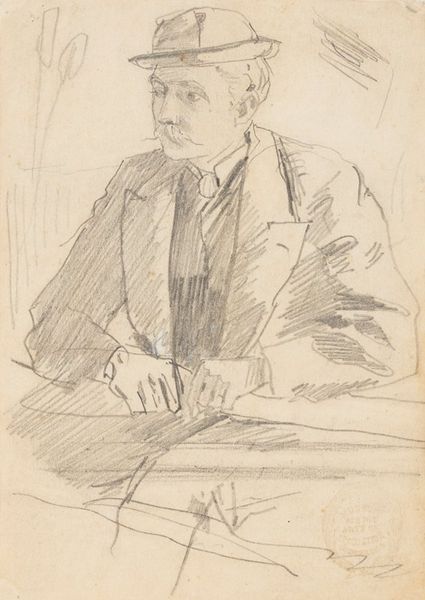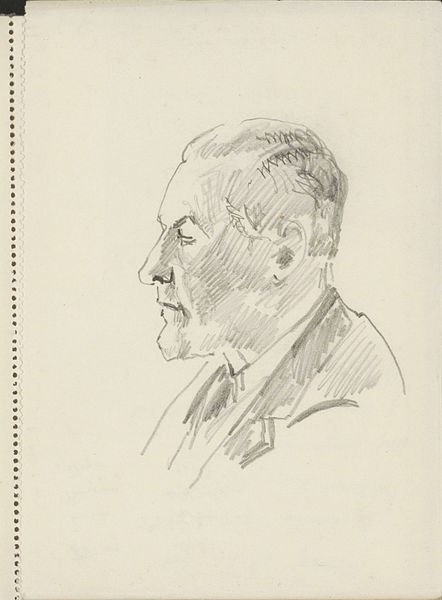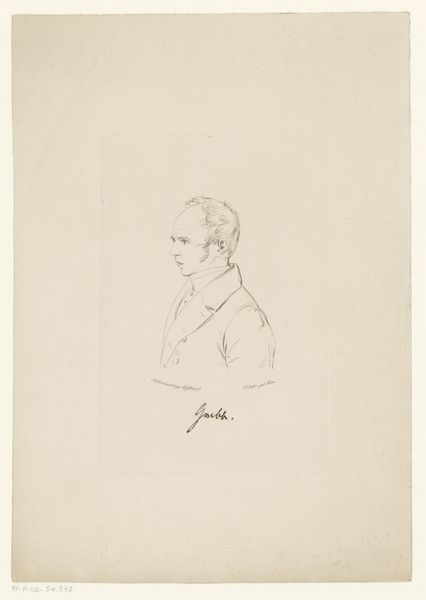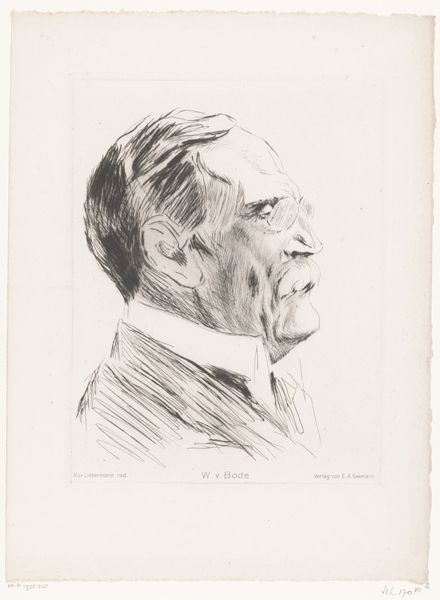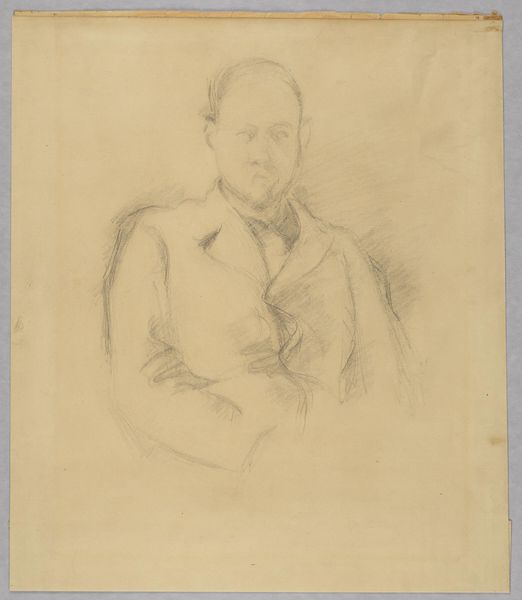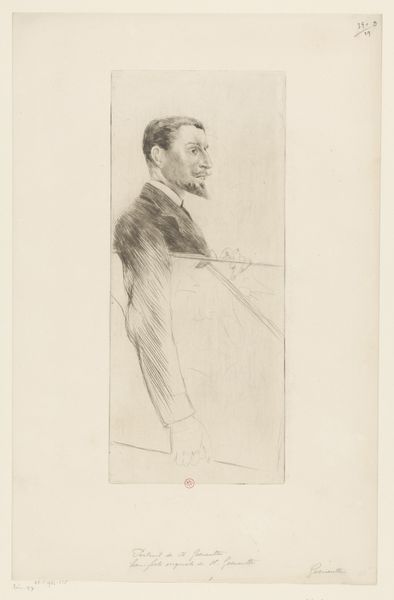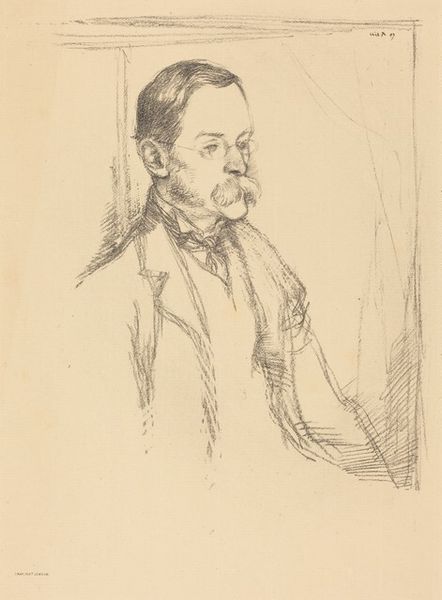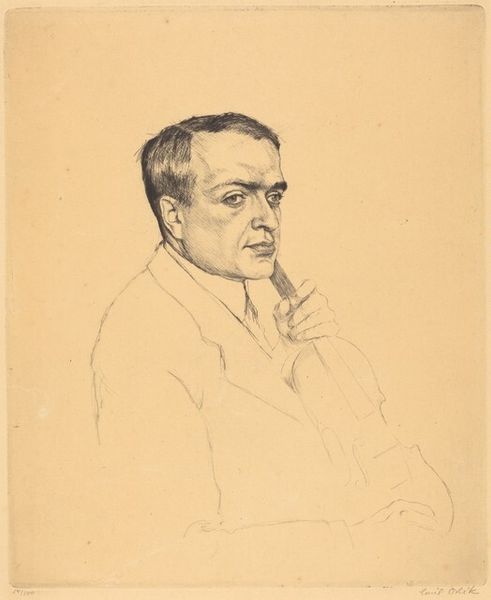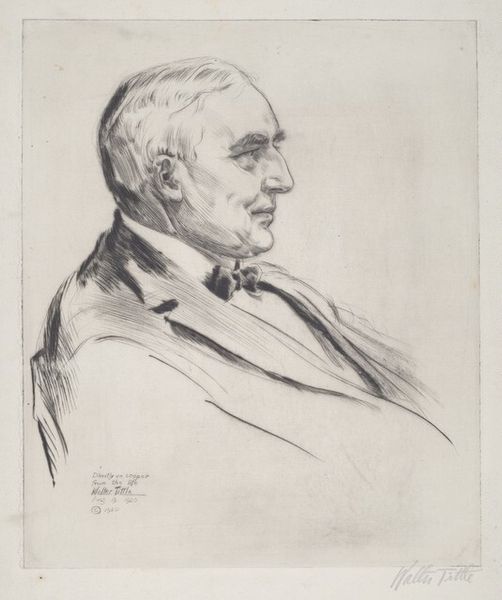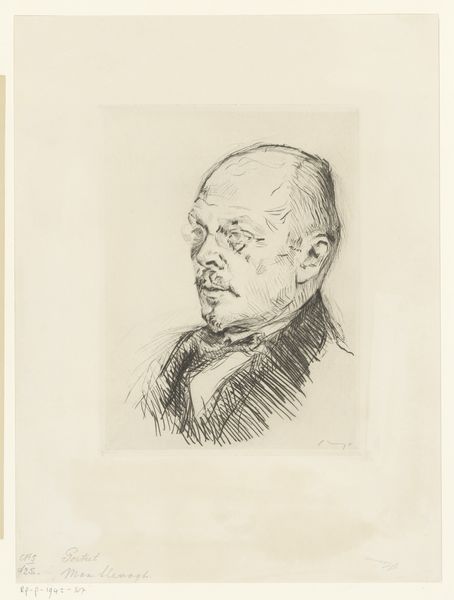
Dimensions: height 137 mm, width 101 mm
Copyright: Rijks Museum: Open Domain
Gerrit Willem Dijsselhof sketched this portrait of a gentleman, rendered with graphite on paper, capturing a figure turned to the right. The formal attire, notably the suit and bow tie, are symbols of status and self-presentation; a visual language prevalent across different eras, from the Renaissance courts to the modern bourgeoisie. This act of sartorial display, a means of asserting identity, echoes in ancient Roman portraiture, where togas denoted citizenship and rank. Over time, these garments evolve, but the underlying desire to communicate status remains. Note the man's gaze, averted and contemplative. We see this pose echoed throughout art history as a symbol for reflection; a figure lost in thought. Whether it be a medieval saint or a modern philosopher, this gesture taps into our own subconscious, inviting us to consider our place in the world. The image resonates on a primal level, triggering deep-seated emotional responses linked to self-awareness and introspection. Such symbols cycle through history, constantly adapting to the times.
Comments
No comments
Be the first to comment and join the conversation on the ultimate creative platform.
